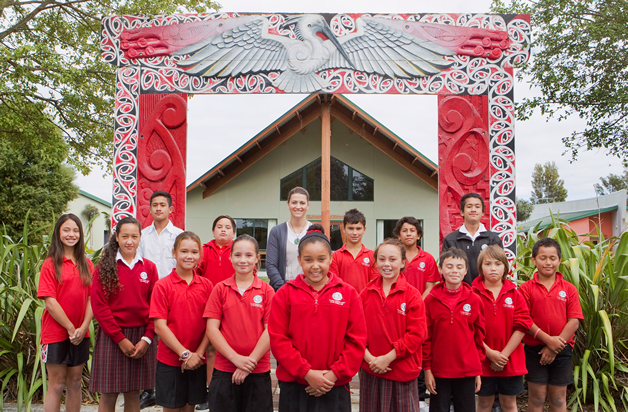Mariki ana kā roimata o Aoraki
Rere atu ki te tai o Mahaanui
tērā kā pakihi hāroa e te Kāhu
Nei rā te mihi ki a koutou ngā ahi kā o te haukāinga, kei whea mai ō koutou kaha ki te tiaki i te marae, i te hapū, i te whenua e hāroa e te Kāhu. Mei kore ko koutou ka aha mātou e noho ana ki ngā hau e whā o te motu nei. Kāore e mutu ngā mihi ki a koutou katoa, tēnā koutou.
Last year in July my son, Rehu Richardson (mokopuna of Maru and Shirley Reihana), attended a literacy conference in Brisbane Australia with a group from his kura, Te Kura Kaupapa Māori o Te Whānau Tahi (Christchurch). Being a Kura Kaupapa Māori, the instructional language is te reo Māori for all the curriculum areas. In year 5 the tamariki start learning English and have 90 minutes of learning each week. As a part of the 2012 programme, an extra class was added with the aim of accelerating the learning for the kids. It is called the “Wai study help” programme and it worked.
Rehu made astounding progress in 2012. His reading comprehension increased and he is now right on track (if not slightly above ) for a child his age learning in an English medium school – even though he only gets one class of English per week. Rehu is one of a group of 15 tamariki who were chosen by the kura to attend a literacy conference in Brisbane, Australia last year in July. Melanie Riwai-Couch (creator of Wai Study Help), and two of the researchers from the University of Canterbury were asked to present at two international conferences last year about the success of the students and Wai Study Help. The group talked about how they achieved their success and also how they celebrate it. It was a powerful message about Māori student success with English literacy. We completed a lot of fundraising including two hāngī, meat raffles, a silent art auction and lots of extra jobs around the house.
Rehu has been running a competition “how many lollies in the jar” and he made $120.
It was a fantastic experience for all the tamariki. The conference focussed on teaching English literacy in the 21st century and it was called “A Brave New World.”
Our tamariki have been brave in many ways. Not only are they literate in two languages but at a level that is equal to their mainstream peers. They were brave enough to head over to another country and share their experiences which included the struggles of setting up a Kura Kaupapa Māori in Christchurch. They were admirable ambassadors and represented their whānau, kura, hapū and iwi with pride and heart. Kai runga noa atu ēnei rangatira mō āpōpō.
Although only a four-day trip, on top of the conference the group managed to pack in a cultural exchange and some rest and recreation. They visited an Aboriginal Culture Centre and enjoyed learning about some of their practices.
“On the way to Auckland, my friend Te Marino and I were chosen to give out lollies on the plane. When we were finished we were given a whole bag of lollies that we shared with the others. We went to the university where they had the conference. We went into a classroom and began our presentation. We talked about getting people from the community to come to kura to help teach the kids to learn English. When the conference was over we got a free lunch. We were also very lucky, the next day, when we went to movie world.”
I can still remember the moment that I was switched on to reading, I was 15 at the time attending Temuka High School. It was my English teacher, Mrs Grant, who took the time to find out what I liked and suggested I read one of Patricia Grace’s books.

Rehu has been running a lollies-in-a-jar counting competition.

Tamariki from Te Kura Kaupapa Maori o Te Whanau Tahi in Christchurch.

Tamariki enjoying the conference environment.

There was also time for rest and recreation.